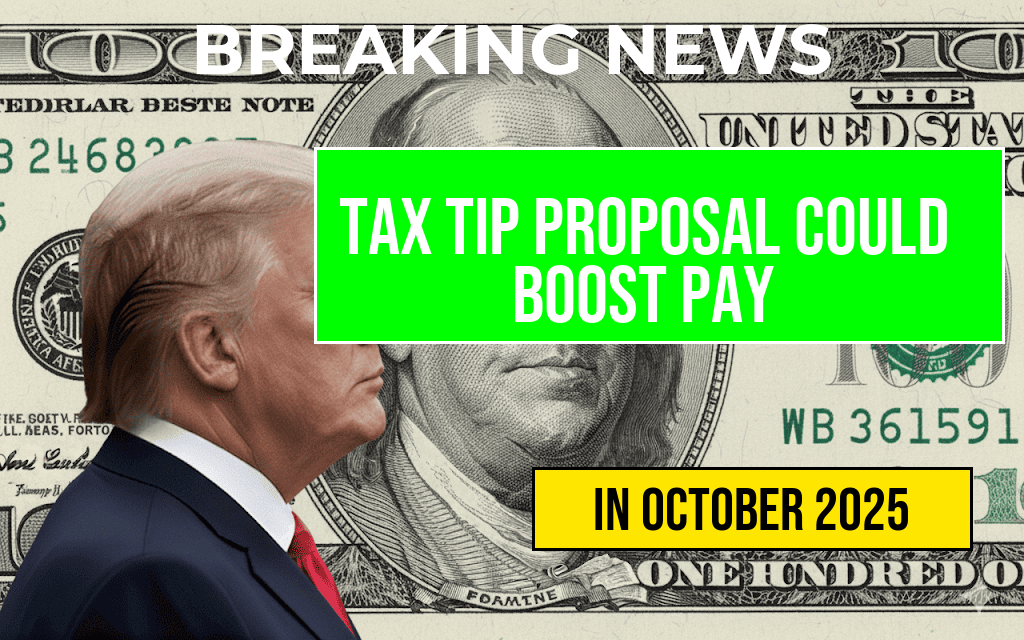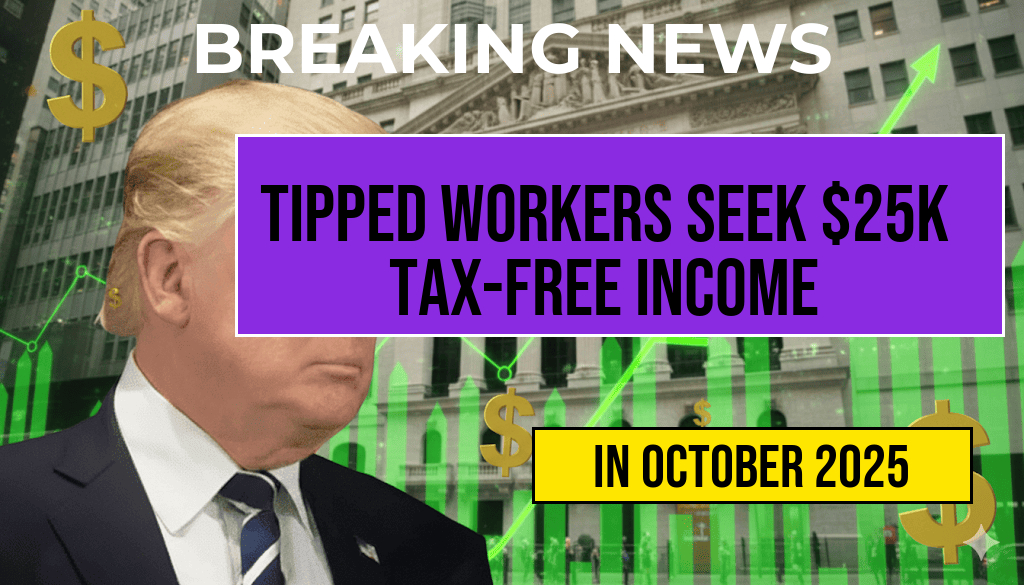Tips for Tipped Workers Seek $25,000 Tax-Free Income Despite Potential $1,000+ EITC Reduction
As the debate over wage fairness and tax benefits intensifies, many tipped workers are eyeing the possibility of earning up to $25,000 annually in a manner that remains largely tax-free. This ambitious target hinges on leveraging the Earned Income Tax Credit (EITC), a vital federal program designed to assist low- and moderate-income earners. However, pursuing this income goal could come with a significant trade-off: a potential loss of over $1,000 in EITC benefits, a complex calculus that many workers are now weighing carefully.
The shifting landscape of tipped wages, combined with recent policy discussions about tax credits, has prompted thousands of service industry employees—such as bartenders, servers, and delivery drivers—to strategize around maximizing their take-home pay while minimizing tax liabilities. This balancing act underscores broader questions about income security, tax fairness, and the future of tipped wages in the United States.
The Mechanics Behind Tipped Income and the EITC
Understanding Tipped Wages and Tax-Free Thresholds
- In the U.S., tipped workers are allowed to keep a portion of their tips tax-free, provided they declare at least the federal minimum wage minus tip credits.
- The federal minimum wage for tipped employees is typically $2.13 per hour, but some states set higher thresholds.
- Many workers aim to earn around $25,000 annually through a combination of wages and tips, which can sometimes push their income into a range that qualifies for significant tax credits.
The Earned Income Tax Credit (EITC)
The EITC is intended to supplement earnings for low- to moderate-income workers, especially those with children. Its value depends on income, filing status, and number of qualifying dependents, often providing a substantial refund for eligible filers.
| Filing Status | Maximum Income for Eligibility | Maximum Credit | Number of Qualifying Children |
|---|---|---|---|
| Single, No Children | $17,240 | $600 | 0 |
| Married Filing Jointly, 3+ Children | $53,120 | $7,430 | 3+ |
While the EITC can significantly boost annual income, it phases out as earnings increase. For tipped workers aiming for high earnings, the phase-out means that earning more can result in losing a sizable chunk of the credit—sometimes over $1,000—which complicates income planning.
Balancing Earnings and Tax Credits: The New Strategy
Maximizing Take-Home Pay
Many tipped workers are adopting strategies to push their gross income toward the $25,000 mark, where they can maintain a comfortable, tax-free buffer. This involves careful management of hours worked, tips reported, and deductions claimed. For example, some workers prioritize reporting tips accurately to qualify for social security benefits while minimizing taxable income that could trigger the EITC phase-out.
The Potential EITC Loss
However, increasing earnings beyond certain thresholds risks diminishing the EITC’s value. For workers with qualifying children, the reduction can exceed $1,000, effectively reducing the net benefit of higher income. This creates a complex decision matrix: earn more but risk losing a substantial credit, or stay within a lower income bracket to preserve the full benefit.
Implications for Policy and Workers
Policy Debates and Future Changes
Recent discussions in Congress have considered modifying the EITC and related tax credits to better accommodate tipped workers. Some proposals aim to simplify reporting requirements and prevent abrupt phase-outs that penalize earners who are close to the thresholds. Advocates argue that such reforms could make working more financially rewarding without penalizing incremental income gains.
For more on the evolving policy landscape, see Wikipedia’s page on EITC.
Challenges Facing Tipped Workers
- Fluctuating tip income due to seasonal or economic factors
- State-specific minimum wage laws impacting overall earnings
- Complexity of tax reporting and eligibility criteria for credits
- Potential for policy shifts that could alter credit phase-outs
Conclusion
As tipped workers pursue higher earnings, the interplay between income goals and tax credits like the EITC remains a critical factor. The ambition to reach a $25,000 threshold tax-free is tempered by the risk of losing over $1,000 in credits, prompting many to reevaluate their income strategies carefully. Policymakers and advocates continue to debate how best to support the hardworking individuals in the service industry, ensuring that efforts to increase earnings do not inadvertently erode vital tax benefits. Navigating this landscape requires a nuanced understanding of federal and state policies, as well as a clear assessment of personal financial goals.
Frequently Asked Questions
What is the main goal of tipped workers regarding their income?
Tipped workers are aiming for a $25,000 tax-free income to improve their financial stability and maximize their earnings without facing significant tax liabilities.
How might the Earned Income Tax Credit (EITC) be affected for tipped workers?
Despite their goal, tipped workers could potentially face a $1,000+ EITC loss, which may reduce their overall tax refund or benefits received through the EITC program.
Why are tipped workers seeking a specific income target of $25,000?
The $25,000 target is considered a threshold where tipped workers can maximize their tax benefits and maintain a tax-free income level, balancing earnings with potential tax credits.
What strategies might tipped workers use to achieve their tax-free income goal?
Tipped workers may consider tax planning, such as increasing tips, utilizing deductions, or adjusting work hours to stay within the tax-free income limit while preserving eligibility for credits like the EITC.
What are the potential implications of this income goal on tax policy and benefit programs?
Achieving a $25,000 tax-free income could influence tax policy discussions and the design of benefit programs, as policymakers seek to balance worker support with fiscal sustainability, especially considering possible EITC reductions.








